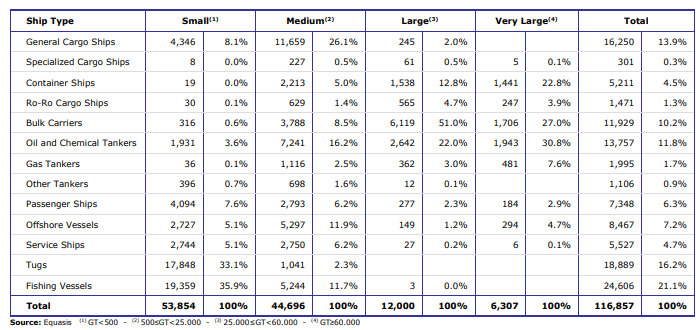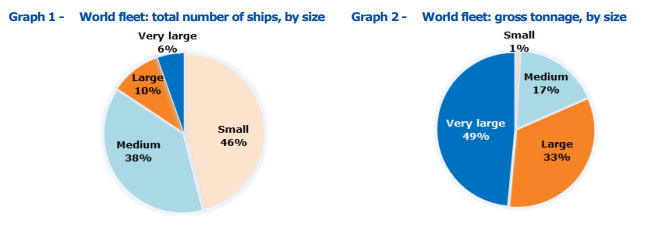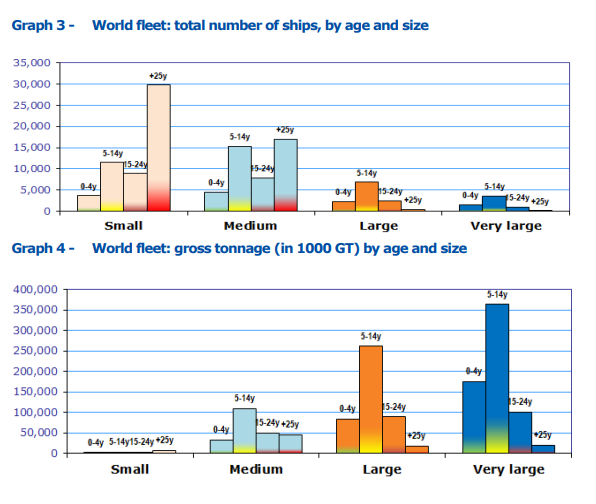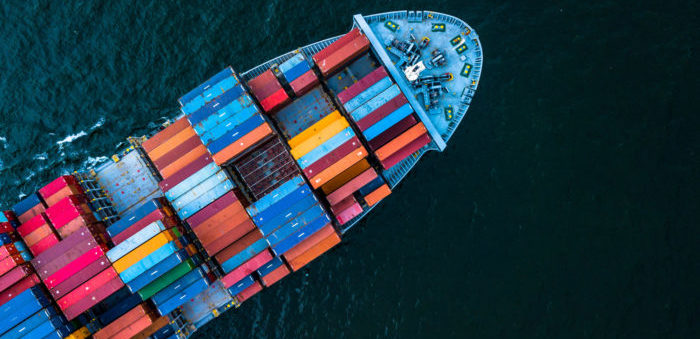EMSA issued its Equasis ‘World Merchant Fleet in 2018’ report, providing a picture of the world’s merchant fleet throughout the year, derived from data contained in the Equasis database. The report revealed that small and medium sized ships dominate the Equasis fleet, accounting for 84%.
For the first time, the report of this year contains information on internationally operating fishing vessels over 100GT with an IMO number.
The statistical analysis is based on size and type of ship as these are two key criteria from a commercial and regulatory point of view.

Ship size
- The Equasis fleet is dominated by small and medium sized ships up to 24,999 GT (84%).
- Small ships alone represent 46% by number (up from 37% in 2017), although around only 1% by tonnage.
- This is likely to be due to the inclusion of fishing vessels in this report for the first time, as 36% of small vessels are fishing vessels.
- In terms of tonnage, the large and very large size categories remain static at 82% of the Equasis fleet, with oil and chemical tankers, bulk carriers, and container ships jointly dominating both categories at 84.3% (large) and 81.1% (very large).
- Bulk Carriers dominate the large category representing with over 50% of ships in this group.

Ship type
- Fishing vessels (21.1%), tugs (16.2%), general cargo ships (13.9%), oil and chemical tankers (11.6%) and bulk carriers (10.2%) are the five most common ship types by number, representing about two thirds of the Equasis fleet.
- Most of these are small and medium sized ships.
- Within the large and very large categories, bulk carriers (42.8%), oil and chemical tankers (25%) and container ships (16.3%) represent approximately 83% of the fleet in number in these ship size categories. These figures show no significant changes to those reported for 2017.
- General cargo ships are the most common ship category in number (28.3%), but bulk carriers are the most common ship type category by tonnage (39.5%).

Ship age
- There is almost an even distribution by number of ships under and over 15 years of age.
- However, there is a large dominance of older ships in the small (71.8%) size category.
- There is an even spread between ships over (55.6%) and under (44.4%) 15 years of age in the medium size category.
- The trend is reversed in the large and very large ship size categories, where 75.9% (large) and 81.0% (very large) are less than 15 years old.
- Most modern fleets are made up of the biggest ships in tonnage. Almost 40% of the world fleet in terms of tonnage is under 15 years old and over 60,000GT, almost 78% of the entire world fleet is under 15 years old and 21.5% is under 4 years old.
Looking back at the statistics of the previous years, it is clear that younger ships are bigger than their predecessors. This trend has been observed over a few years, with bigger and bigger ships being added to the world fleet.
- For each size category, almost a third of the total number of ships in Equasis are associated with a targeted flag State. This proportion is lower for large ships (31%) and very large ships (29%).
Geographical data
- The majority of maritime traffic occurs in East Asia (15.1%), South East Asia (12.3%) and the Mediterranean Sea (9.4%), West Europe (9.2%) and South Asia (8.8%), with these geographical areas accounting for almost 55% of the total sightings reported to Equasis.
- In respect to ship size, small sized ships were more frequently sighted in the Mediterranean Sea and West Europe whilst large and very large ships in East Asia, South East Asia and South Asia.
Explore more herebelow:
See also:

































































